11 Inspirational Flowers That Start with I + Growing Guide Charts

This post follows our research editorial guidelines.

Inimitable flowering arrangements intrigue and inspire. Installed with intention, each floral item is impressive in inclination. I imagine individual items incandescent with an infatuating image of indolence and indulgence. In addition, it’s increasingly imperative to include improvements that invite important insects. If they investigate, they’re inspired to ingest nectar and pollen inside.
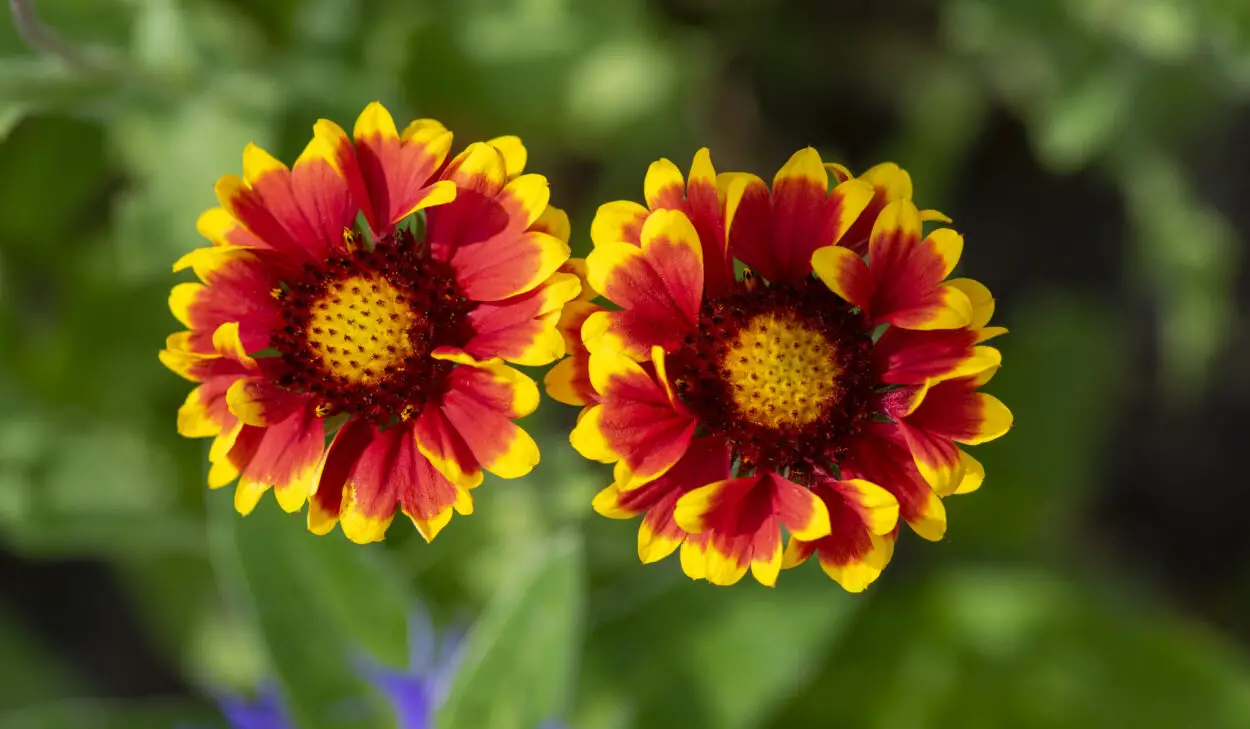
I’m invigilating an international inscription of my most idolized flowers, in alphabetical order. Letter ‘I’ is the inspiration inside!
Table of Contents
1. Iris (Iris x germanica)
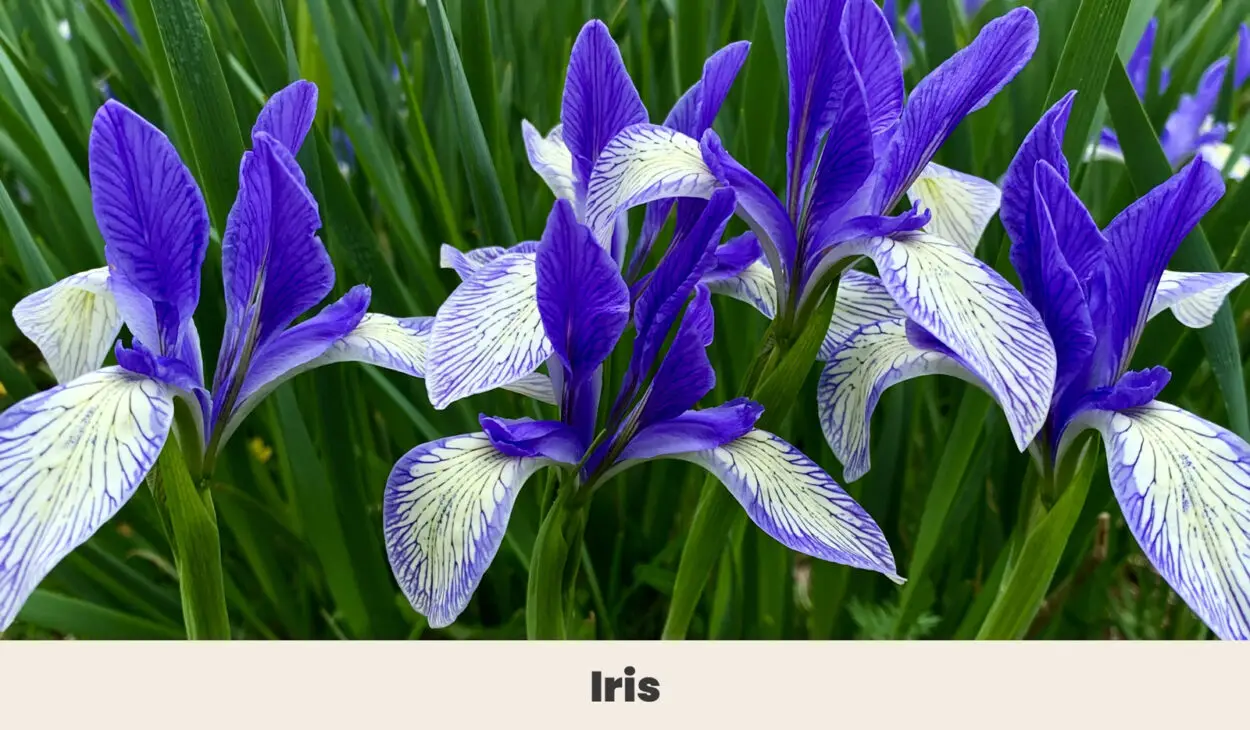
Elegant iris is a classic flowering bulb, with tall stalks topped with frothy, triple-lobed flowers in purple, white, and gold. In ideal conditions, the fragrant flowers can reach a whopping three feet tall, and they’re as popular as a cut flower as they are a garden bloom.
It’s considered the likely parent for many of the glamorous iris hybrids available on the consumer market, with varieties that bloom in black, blue cream, and burgundy.
| Botanical Name: | Iris x germanica |
| Growth Rate: | Fast |
| Native Range: | Mediterranean |
| Hardiness Zones: | 3 to 10 |
| Dangers: | Mildly poisonous, can cause dermatitis |
| Soil Needs: | Organically rich, well-draining loam or sandy soils |
| Exposure: | Full sun to partial shade |
| Ease of Care: | Moderate |
| Diseases: | Prone to bulb rot if drainage needs are not met, fungal disease, crown rot, mosaic virus |
| Propagation: | Seed, division |
| Fertilizer: | Fertilize annually with balanced slow-release granules |
| Pests: | Iris borer |
| Blooming Period: | Summer |
| Pruning: | Deadhead to promote vigor |
| Water needs: | Low to moderate; drought tolerant |
2. Ice plant (Delosperma cooperi)
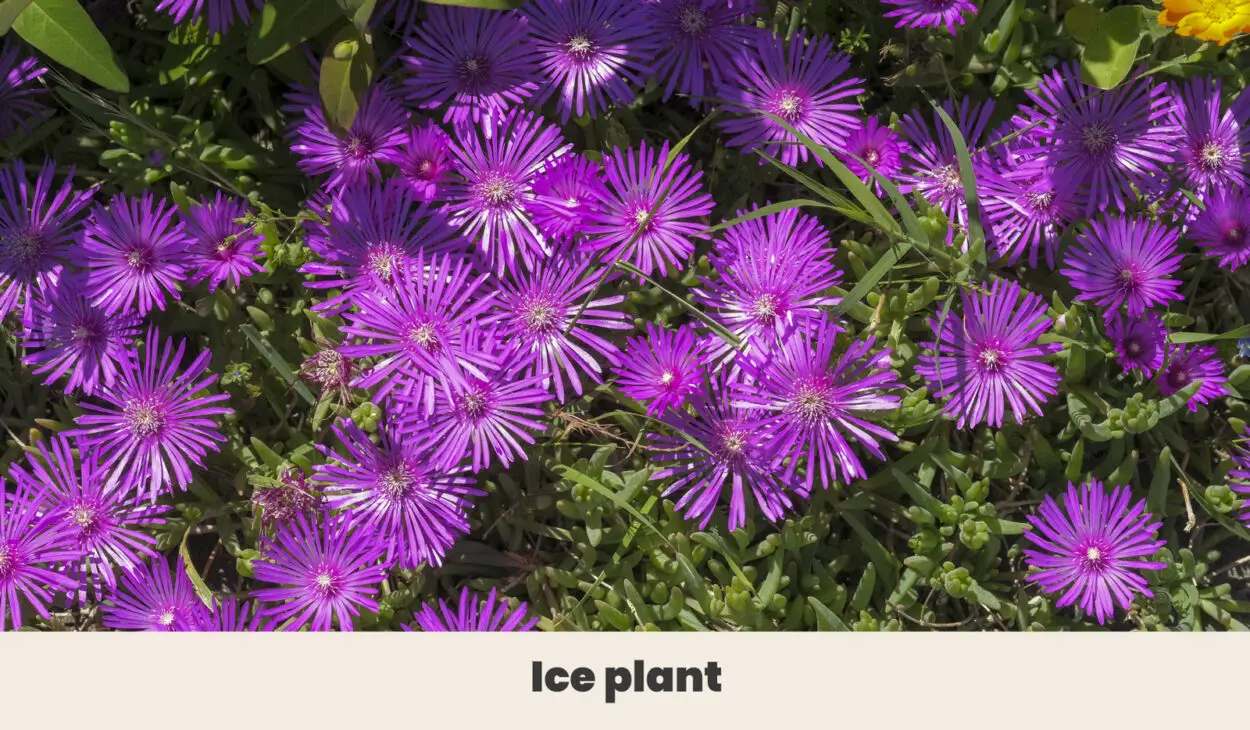
Also known as pigface, the ice plant is a sweet, low-growing succulent with cheerful magenta blossoms. They flower profusely the second the weather warms, and will keep it upright to winter.
With a high tolerance for low fertility, sandy soil, and a love of dry conditions, ice plant makes a great low-maintenance ground cover and thrives in arid parts of rock gardens and walkways. They’ll do equally as well in containers or hanging baskets.
| Botanical Name: | Delosperma cooperi |
| Growth Rate: | Slow |
| Native Range: | South Africa |
| Hardiness Zones: | 6 to 10 |
| Dangers: | May become invasive, plant with care |
| Soil Needs: | Sandy or rocky well-draining soils |
| Exposure: | Full sun to partial shade |
| Ease of Care: | Easy |
| Diseases: | Prone to rot if conditions are too wet |
| Propagation: | Cutting, seed, division |
| Fertilizer: | Do not fertilize |
| Pests: | Some risk of aphids or mealybugs |
| Blooming Period: | Spring to fall |
| Pruning: | Prune to limit the spread |
| Water needs: | Low |
3. Indian Blanket (Gaillardia pulchella)

Bright and cheery, the Indian blanket is a comely wildflower with round, radiant flowers. I’m quite fond of their other common name, firewheel, which thoroughly captures their blazing glory.
They’re a long blooming plant, ideal for pollinator gardens or wildflower beds, and will provide much-needed food and shelter for friendly bugs and butterflies. Seed heads also provide vital winter food for foraging songbirds, so consider letting the flowers run to seed.
| Botanical Name: | Gaillardia pulchella |
| Growth Rate: | Fast |
| Native Range: | South-central United States and northern Mexico |
| Hardiness Zones: | 5a to 9b |
| Dangers: | None recorded |
| Soil Needs: | Dry, sandy soils |
| Exposure: | Full sun to light shade |
| Ease of Care: | Easy |
| Diseases: | Disease resistant |
| Propagation: | Seed |
| Fertilizer: | Not required |
| Pests: | Some risk of aphids or thrips |
| Blooming Period: | Spring to fall |
| Pruning: | Deadhead to limit self-seeding |
| Water needs: | Low |
4. Indian paintbrush (Castilleja coccinea.)
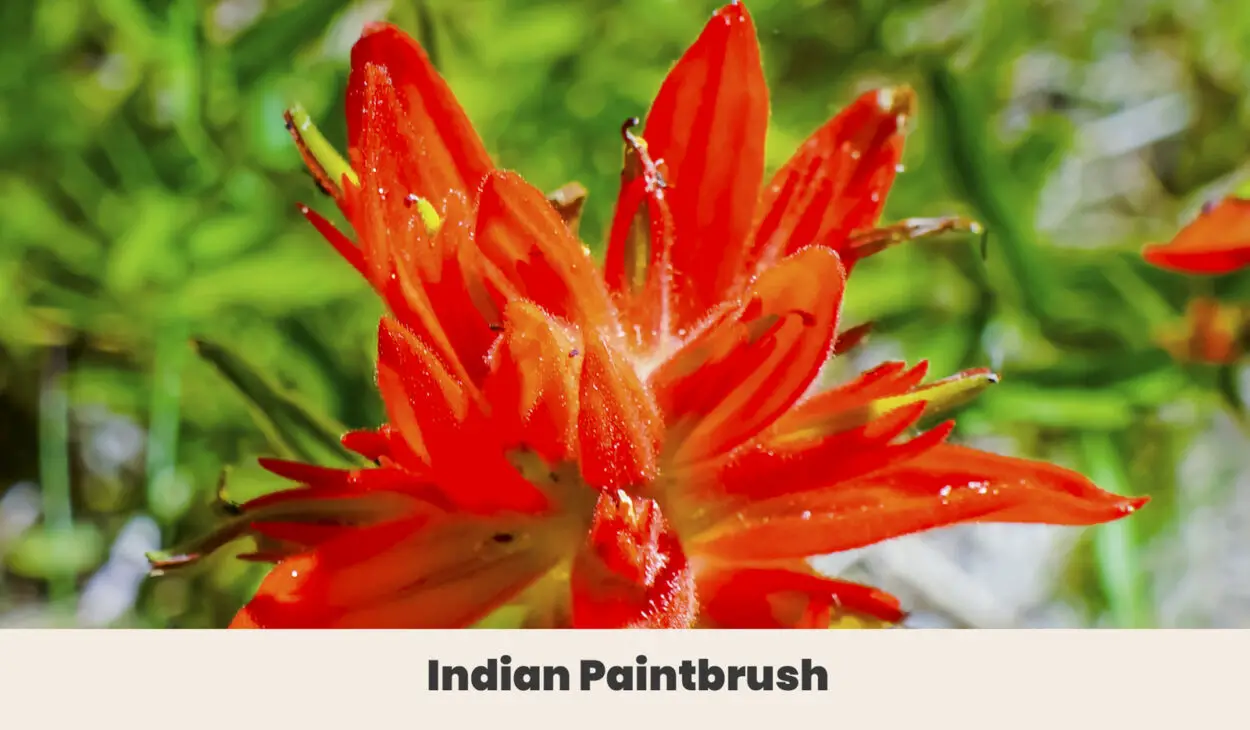
Hummingbird lovers will delight in the visitors a stand of Indian paintbrush brings to your garden. These American natives court the little birds with tall clusters of scarlet blooms, tubular in shape and rich in nectar.
They’re a clever opportunist, with the ability to steal food from neighboring plants. They prefer sagebrush or grasses, so be sure to plant an unwitting friend to help your Indian paintbrush to thrive.
| Botanical Name: | Castilleja coccinea |
| Growth Rate: | Moderate |
| Native Range: | Canada and eastern North America |
| Hardiness Zones: | 4 to 8 |
| Dangers: | None recorded |
| Soil Needs: | Tolerates most soils but prefers loam |
| Exposure: | Full sun |
| Ease of Care: | Moderate |
| Diseases: | Disease resistant |
| Propagation: | Seed |
| Fertilizer: | Do not fertilize |
| Pests: | Pest resistant |
| Blooming Period: | Late spring to summer |
| Pruning: | Not required |
| Water needs: | Moderate |
5. Impatiens (Impatiens capensis)
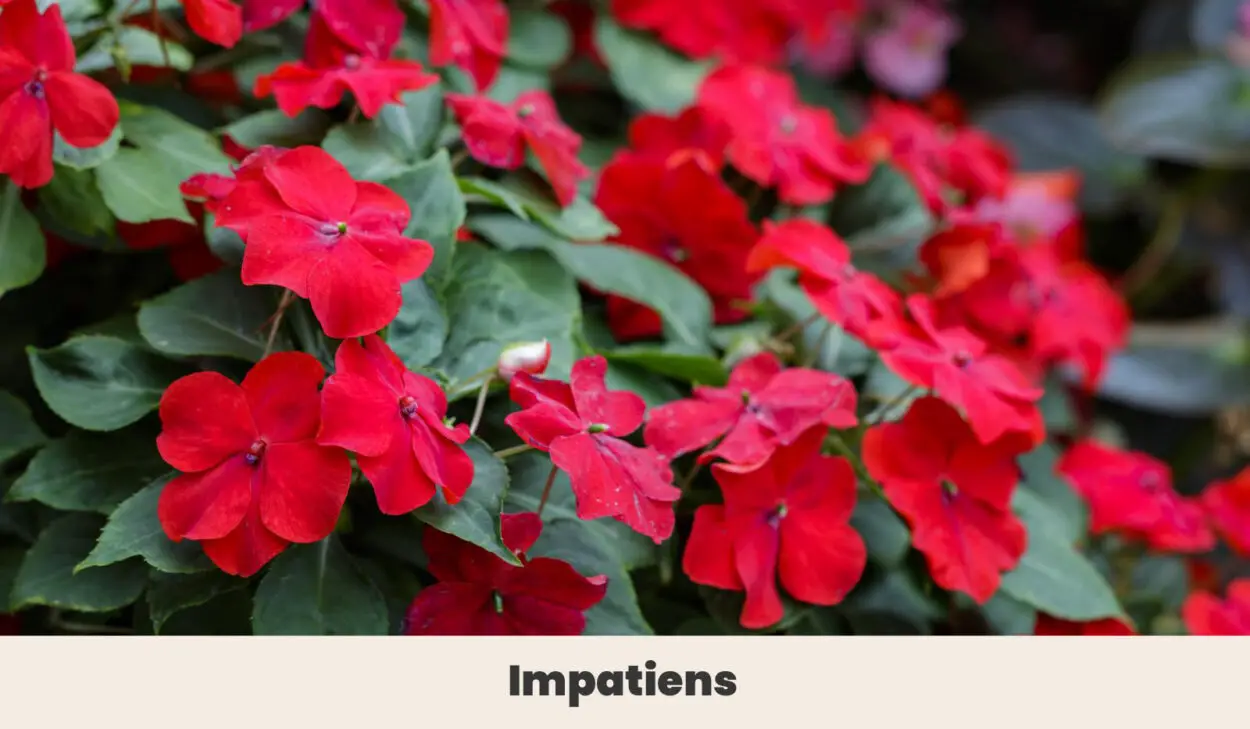
Impatiens are to my mind an underrated jewel. They’re an easy-going American native, with low demands and high rewards. They grow magnificently in wet, almost boggy areas and in disturbed, poor-quality soils, where they produce gorgeous scatterings of golden flowers.
The sweet cup-shaped blooms are highly sought after by hummingbirds, bees, and, butterflies, drawing their fluttering majesty into even the least appealing parts of the garden. Who can ask for more than that?
| Botanical Name: | Impatiens capensis |
| Growth Rate: | Fast |
| Native Range: | North America |
| Hardiness Zones: | 2a to 11b |
| Dangers: | Prune to maintain the spread |
| Soil Needs: | Moist, organically rich soils especially clay |
| Exposure: | Partial to full shade |
| Ease of Care: | Moderate |
| Diseases: | Disease res |
| Propagation: | Seed, division |
| Fertilizer: | Not required |
| Pests: | Pest resistant |
| Blooming Period: | Summer to fall |
| Pruning: | Prune to maintain spread |
| Water needs: | High |
6. Indian pink (Spigelia marilandica)
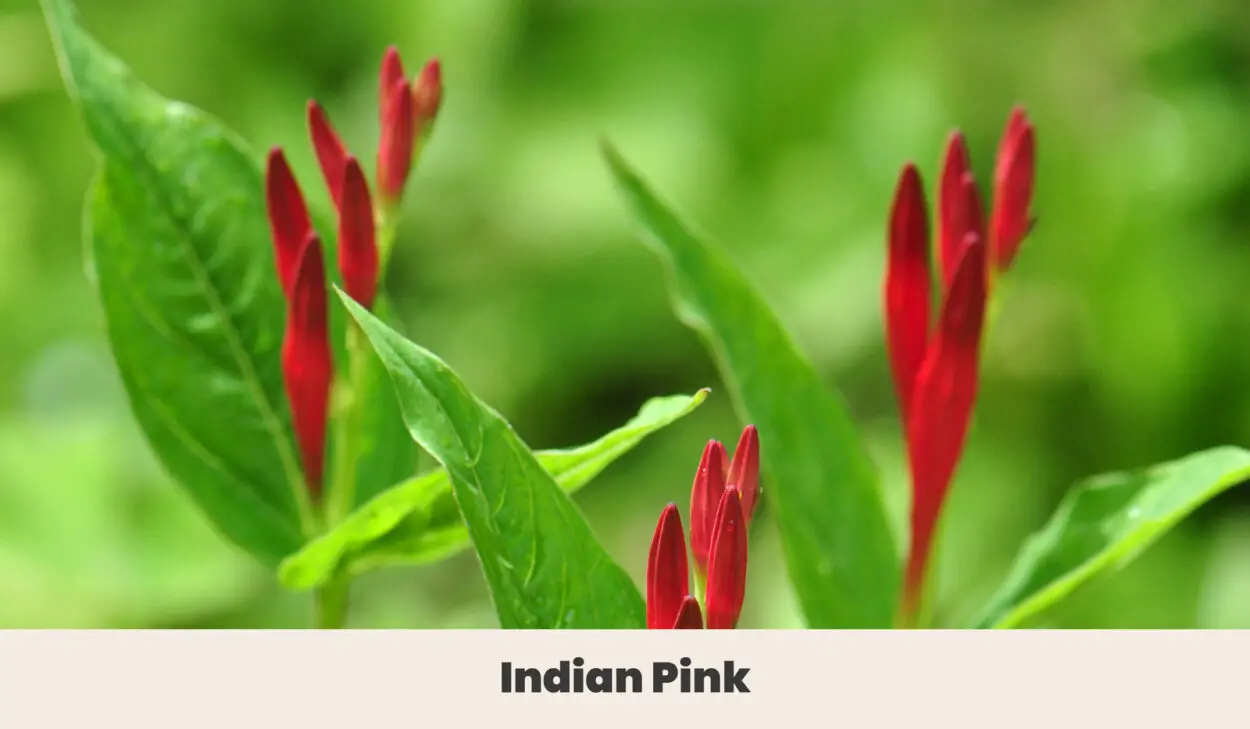
If you want to do your part of environmental conservation, planting Indian pink is a good step. It’s a threatened American wildflower known for long, tubular red and pink flowers that open with a golden star-shaped spread of petals.
With a flower like that, it’s no surprise that hummingbirds in particular love them and will make as many pit stops among their blossoms as they can.
| Botanical Name: | Spigelia marilandica |
| Growth Rate: | Moderate |
| Native Range: | Southeastern United States |
| Hardiness Zones: | 5 to 9 |
| Dangers: | Mildly poisonous |
| Soil Needs: | Moist, organically rich soils |
| Exposure: | Partial to full shade |
| Ease of Care: | Easy |
| Diseases: | Disease resistant |
| Propagation: | Seed |
| Fertilizer: | Not required |
| Pests: | Pest resistant |
| Blooming Period: | Summer |
| Pruning: | Deadhead as desired |
| Water needs: | Moderate |
7. Ione Heckler (Oxalis laciniata x enneaphylla)

The Ione Heckler oxalis cultivar brings together some of the best traits of its parent plants. Its blooms are the charming purple cups of the O. laciniata, dainty and sweet, appearing in dense profusion.
In contrast, the leaves are frilly and divided, deep blue and purple at the base similar to the O. enneaphylla. It’s easier than both to care for, thriving in low-fertility soils and damp, low-light areas of the garden.
| Botanical Name: | Oxalis laciniata x enneaphylla |
| Growth Rate: | Fast |
| Native Range: | Hybrid |
| Hardiness Zones: | 5 to 7 |
| Dangers: | None recorded |
| Soil Needs: | Sandy or rocky free-draining soils |
| Exposure: | Full sun to partial shade |
| Ease of Care: | Easy |
| Diseases: | Prone to leaf spot if drainage needs are not met |
| Propagation: | Division |
| Fertilizer: | Fertilize monthly during the growing season with balanced liquid fertilizer |
| Pests: | Some risk of aphids and mealybugs |
| Blooming Period: | Late spring to summer |
| Pruning: | Deadhead as desired |
| Water needs: | Low to moderate |
8. Indian hyacinth (Camassia spp.)
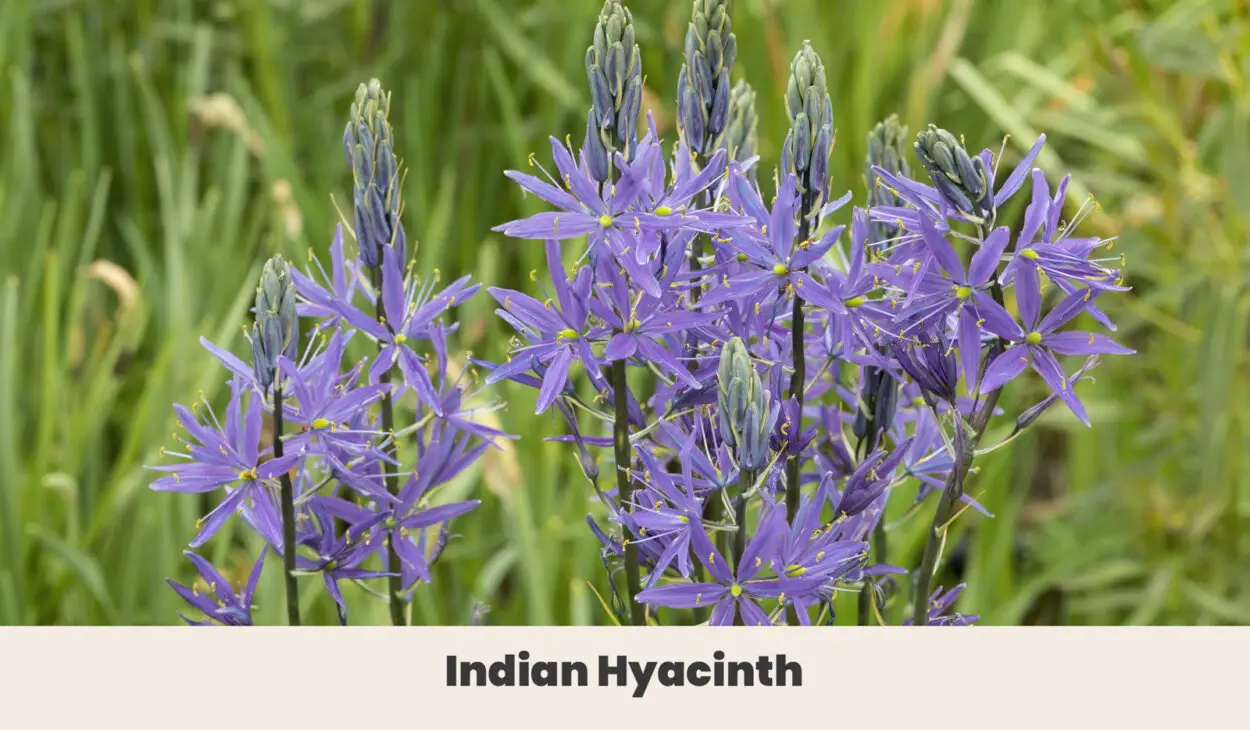
A meadow of vivid violet Indian hyacinth is a captivating sight, each spire of blooms carrying up to a hundred vibrant star-shaped flowers. It’s a North American native, beloved both by nectar-eating insects and native people through the plants range.
Its bulbs are a traditional food and can be either roasted like an onion or boiled down into a syrupy treat that’s just as sweet as the flowers themselves. Once established they require little maintenance and will pop up cheerfully year after year.
| Botanical Name: | Camassia spp. |
| Growth Rate: | Fast |
| Native Range: | Eastern Canada and United States |
| Hardiness Zones: | 4a to 8b |
| Dangers: | None recorded |
| Soil Needs: | Well-draining, organically rich soils of most types |
| Exposure: | Full sun to partial shade |
| Ease of Care: | Moderate |
| Diseases: | Disease resistant |
| Propagation: | Seed, division |
| Fertilizer: | Eastern Canada and the United States |
| Pests: | Pest resistant |
| Blooming Period: | Spring |
| Pruning: | Deadhead as desired |
| Water needs: | Moderate |
9. Indian aster (Symphyotrichum novae-angliae)

The pleasing contrast between the sunny yellow heart and the bright purple petals of the Indian aster brings consistent cheer to the garden. They’re vigorous growers, able to reach two meters tall with ease, and produce hundreds of flowers each season.
They also play host to a bewildering variety of native butterflies from April to November, so don’t be surprised if its fall flowers look a bit nibbled by the time winter rolls around. It’s also valuable to native bees and birds.
| Botanical Name: | Symphyotrichum novae-angliae |
| Growth Rate: | Fast |
| Native Range: | Eastern North America |
| Hardiness Zones: | 4a to 8b |
| Dangers: | Somewhat flammable |
| Soil Needs: | Prune to maintain airflow and shape, deadhead to prevent self seeding |
| Exposure: | Full sun to partial shade |
| Ease of Care: | Moderate |
| Diseases: | Prone to fungal disease if airflow is poor |
| Propagation: | Seed, cuttings |
| Fertilizer: | Fertilize annually with balanced slow-release granules |
| Pests: | Caterpillars |
| Blooming Period: | Late summer to fall |
| Pruning: | Prune to maintain airflow and shape, deadhead to prevent self-seeding |
| Water needs: | Moderate |
10. Irish moss (Sagina subulata)
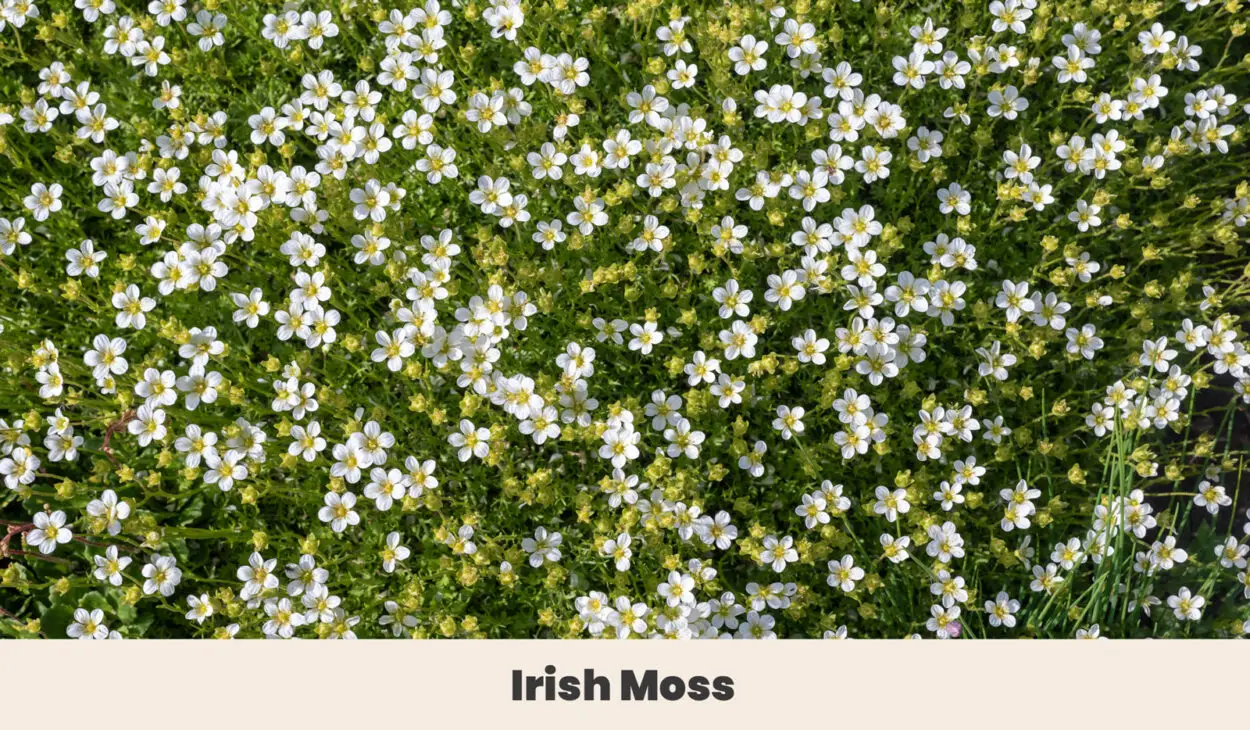
The flowers of Irish moss are pinhead small, white or yellow, scattered like tiny jewels across the soft fuzz of the leaves. While it’s possible given the right conditions to see flowers on garden moss, grown carefully between stones or in shady glens, I’ve always been a fan of moss terrariums.
It brings these tiny treasures up to the eye, and protects them from heavy feet and rough weather.
| Botanical Name: | Sagina subulata |
| Growth Rate: | Moderate |
| Native Range: | Western and Central Europe |
| Hardiness Zones: | 4 to 8 |
| Dangers: | None recorded |
| Soil Needs: | Sandy or clay soils with good drainage |
| Exposure: | Full sun to deep shade |
| Ease of Care: | Easy |
| Diseases: | Disease resistant |
| Propagation: | Division, seed |
| Fertilizer: | Fertilize annually with balanced slow-release granules |
| Pests: | Low risk of slugs |
| Blooming Period: | Spring to summer |
| Pruning: | Not required |
| Water needs: | High |
11. Indigo Plant (Indigofera tinctoria)\
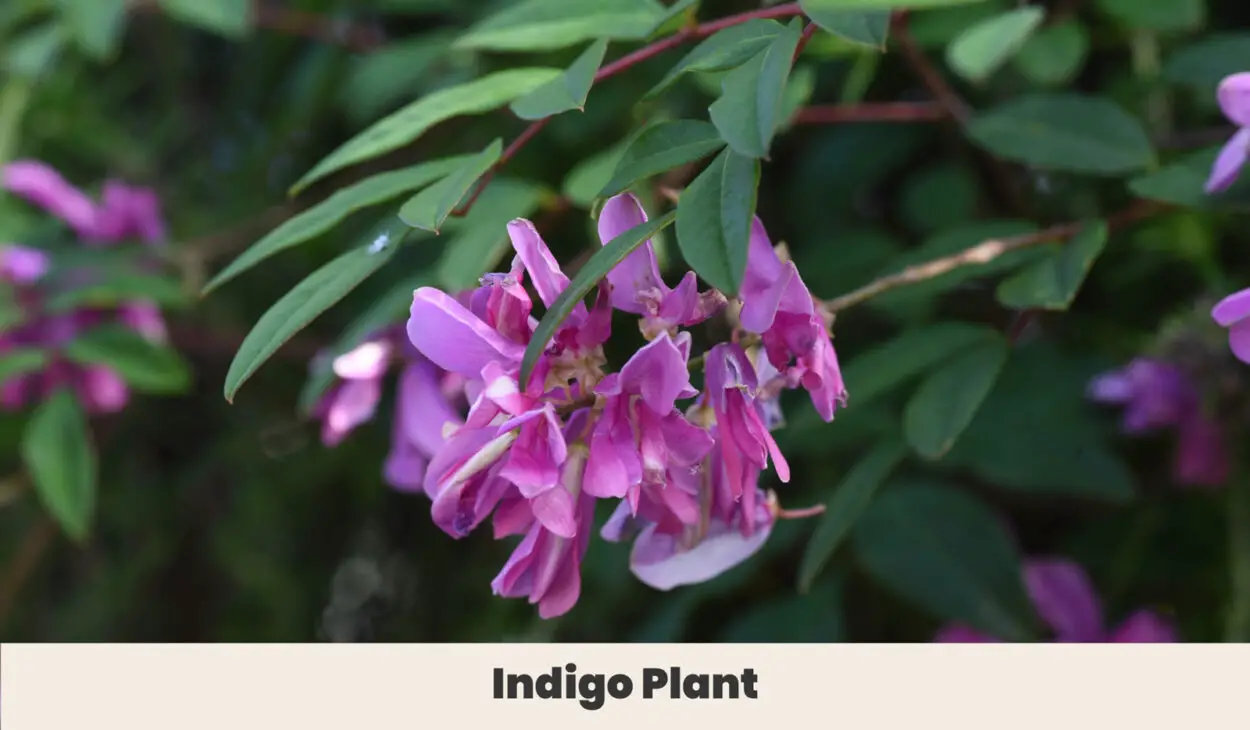
The Indigo plant is a long-cultivated cash crop, with records showing it has been grown across the tropics since at least 4000 BC. Compounds in its leaves produce a distinctive dye, most widely known today as the shade used to turn denim blue.
The flowers, however, are a soft powdery pink or violet and grow in spires hidden behind elegant falls of rich blue-green leaves.
| Botanical Name: | Indigofera tinctoria |
| Growth Rate: | Fast |
| Native Range: | Tropics of Africa, Asia, Mexico, and South America |
| Hardiness Zones: | 10 to 12 |
| Dangers: | None recorded |
| Soil Needs: | Moist, organically rich soil of most types |
| Exposure: | Full sun |
| Ease of Care: | Moderate |
| Diseases: | Disease resistant |
| Propagation: | Seed, cutting |
| Fertilizer: | Not required |
| Pests: | Pest resistant |
| Blooming Period: | Summer |
| Pruning: | Prune to maintain size and shape |
| Water needs: | Moderate |
Final thoughts
Starting the process of incorporating flowering plants letter by letter can be daunting. However, with creativity and determination, even those lacking experience can create amazing gardens that are full of inspiration beyond words.

